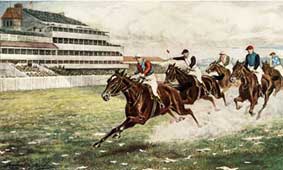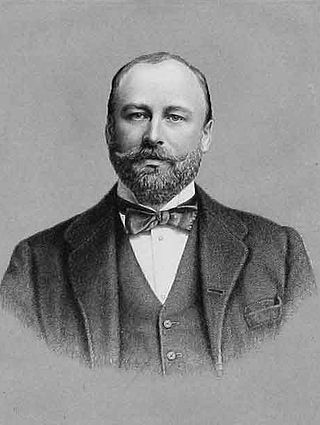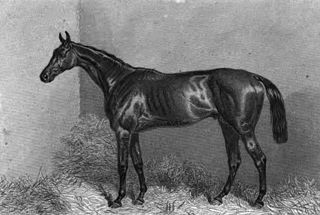
The 1893 Epsom Derby was a horse race which took place at Epsom Downs on 31 May 1893. It was the 113th running of the Derby, and it was won by Isinglass. The winner was ridden by Tommy Loates and trained by James Jewitt.

The 1893 Epsom Derby was a horse race which took place at Epsom Downs on 31 May 1893. It was the 113th running of the Derby, and it was won by Isinglass. The winner was ridden by Tommy Loates and trained by James Jewitt.
| * | Horse | Jockey | Trainer | SP | |
| 1 | Isinglass | Tommy Loates | James Jewitt | 4/9 fav | |
| 2 | 1½ | Ravensbury | H Barker | William Jarvis | 25/1 |
| 3 | 2 | Raeburn | John Watts | George Dawson | 20/1 |
| 4 | Peppercorn | F Rickaby | Thomas Leader | 100/1 | |
| 5 | Quickly Wise | J Calder | 100/1 | ||
| 6 | Royal Harry | W Bradford | 100/1 | ||
| 7 | Irish Wake | Morny Cannon | 100/7 | ||
| 8 | Son of a Gun | J Calder | 28/1 | ||
| 9 | Dame President | George Barrett | 20/1 | ||
| 10 | William | F Webb | 100/6 | ||
| UR | Lord William | T Mullen | 100/1 | ||
* The distances between the horses are shown in lengths or shorter. shd = short-head; hd = head; PU = pulled up; UR = unseated rider.
Further details of the winner, Isinglass : [1]

The Derby Stakes, also known as the Derby or the Epsom Derby, is a Group 1 flat horse race in England open to three-year-old colts and fillies. It is run at Epsom Downs Racecourse in Surrey on the first Saturday of June each year, over a distance of one mile, four furlongs and 10 yards, or about 1½ miles. It was first run in 1780.

1893 in sports describes the year's events in world sport.

Blenheim (1927–1958), also known as Blenheim II, was a British Thoroughbred race horse who won The Derby in 1930. As sire, he had a major influence on pedigrees around the world. Blenheim was highly tried, by European standards, as a two-year-old in 1929, winning four of his seven races. In the following season he was beaten in his first two races before recording an upset 18/1 win in the Derby. His racing career was ended by injury soon afterwards, and he was retired to stud, where he became an extremely successful and influential breeding stallion, both in Europe and North America.

Isinglass (1890–1911) was a British Thoroughbred racehorse and sire. In a career which lasted from 1892 until 1895 he ran twelve times and won eleven races. He was the best British two-year-old of 1892 and went on to become sixth winner of the English Triple Crown by winning the 2000 Guineas at Newmarket, The Derby and the St. Leger Stakes at Doncaster in the following year. He was undefeated in his last two seasons, setting a world record for prize money and gaining recognition from contemporary experts as one of the best horses seen in England up to that time.

April the Fifth (1929–1954) was a British Thoroughbred racehorse and sire. In a career that lasted from September 1931 until September 1932 he ran nine times and won three races. He failed to win or be placed in his first five races, but then showed sudden improvement in the spring of 1932, winning his next three races including The Derby. His subsequent career was adversely affected by injury and after one more unsuccessful race he was retired to stud, where he had little impact as a sire of winners.

Colonel Harry Leslie Blundell McCalmont, CB was a British army officer, race-horse owner, yachtsman and Conservative party politician.

Sir Charles Day Rose, 1st Baronet was a British-Canadian businessman, race horse breeder, yachtsman, and Liberal politician.

Swynford was a British Thoroughbred racehorse. Bred at the 16th Lord Derby's stud in Lincolnshire, England he was sired by John O'Gaunt, a son of Isinglass, winner of the British Triple Crown in 1893. His dam was Lord Derby's foundation mare and 1896 Epsom Oaks winner Canterbury Pilgrim who also produced Chaucer, the 1927 and 1933 Leading broodmare sire in Great Britain & Ireland.

Common (1888–1912) was a British Thoroughbred racehorse and sire. In a career that lasted from May to September 1891 he ran five times and won four races. He became the fifth, and the most lighty-raced horse to win the English Triple Crown by winning the 2000 Guineas at Newmarket, the Derby at Epsom and the St Leger at Doncaster.

Ladas (1891–1914) was a British Thoroughbred racehorse and sire. His career attracted an unusual amount of attention as his owner, Lord Rosebery, became Prime Minister of the United Kingdom at the height of his success.

La Fleche (1889–1916) was a British Thoroughbred racehorse and broodmare. After being sold for a world record price as a yearling in 1890, she was undefeated as a two-year-old in 1891, winning races against her own sex and defeating some of the year's leading colts. She went on to become the dominant British three-year-old of 1892, claiming the Fillies’ Triple Crown by winning the 1000 Guineas at Newmarket, the Oaks at Epsom and the St Leger at Doncaster. Her only defeat of the year came when she finished second when starting favourite for The Derby.
Colombo (1931–1954) was a British Thoroughbred racehorse and sire. In a career that lasted from April 1933 to June 1934 he ran eleven times and won nine races. Colombo was an outstanding two-year-old, unbeaten in seven races in 1933 and drawing comparisons with champions such as Isinglass, Persimmon and Bayardo. In 1934 he maintained his unbeaten record by winning the Craven Stakes and the 2000 Guineas at Newmarket and then finished third as the favourite in The Derby. After one more unsuccessful race he was retired to stud, where he had some success as a sire of winners until his death in 1954.
The 1890 Epsom Derby was a horse race which took place at Epsom Downs on 2 June 1890. It was the 110th running of the Derby, and it was won by Sainfoin. The winner was ridden by John Watts and trained by John Porter.

Captain James Octavius Machell (1837–1902) was an influential figure in British horse racing during the final decades of the 19th century. He was a respected judge of horses and an astute and highly successful gambler. During a career that lasted almost forty years he managed and trained eleven English classic winners and was himself the owner of a record three Grand National winners.

Lord Clifden was a British Thoroughbred racehorse. He was undefeated as a two-year-old, including wins in the Woodcote Stakes and Champagne Stakes. As a three-year-old he was just beaten by a short-head in the Derby, before winning the St. Leger later in the season, despite being 100 yards behind the rest of the field at one point in the race. After an unsuccessful four-year-old campaign he was retired to stud and became champion sire of Great Britain and Ireland in 1876. He sired the St. Leger winners Hawthornden and Wenlock, the dual-Classic winners Petrarch and Jannette, as well as the champion sire Hampton. Lord Clifden was purchased by Carnegie Robert John Jervis, 3rd Viscount St Vincent, after his first race and was sold to Thomas Gee as a stallion. As the two and three-year-old he was trained by Edwin Parr, with William Bevill training him for his four-year-old season.

Cheveley Park Stud is a thoroughbred racehorse ownership and breeding operation in Newmarket, Suffolk, UK, which has bred and owned many notable horses. It is the oldest stud in Newmarket, the "capital" of British racing, with evidence of horse breeding on the site for over a thousand years, and became famous in the early nineteenth century.
Sandwich was a British Thoroughbred racehorse that won the classic St Leger Stakes at Doncaster Racecourse in 1931, for owner Earl of Rosebery. By 1931, Archibald Primrose, 5th Earl of Rosebery had died, making this a win for his son, Harry Primrose, 6th Earl of Rosebery. Sandwich was a half-brother to Manna, winner of the 1925 Epsom Derby, and as well as his 1931 St Leger success also won the Chester Vase and King Edward VII Stakes.
Mr Jinks was a British Thoroughbred racehorse and sire. He was one of the best two-year-olds in England in 1928 when he won five of his seven races including the New Stakes, July Stakes, Lavant Stakes and Prendergast Stakes. In the following spring he took the Severals Stakes before recording his biggest success in the 2000 Guineas. He failed when favourite for the Epsom Derby but returned to form to win the St James's Palace Stakes. His performances subsequently deteriorated and he was retired from racing at the end of the year. He made little impact as a breeding stallion.
Louvois was a British Thoroughbred racehorse and sire. He showed very promising form as a two-year-old in 1912 when he won four races including the Dewhurst Stakes as well as finishing third in the Middle Park Plate. In the following spring he was placed first in the 2000 Guineas despite serious doubts about whether he had actually crossed the line in front, and was then awarded second place in an extremely controversial race for the Epsom Derby. He went on to win the Prince of Wales's Stakes and finish second in the Eclipse Stakes before running unplaced when favourite for the St Leger. After his retirement from racing he had some success as a breeding stallion.

Canterbury Pilgrim (1893–1917) was a British Thoroughbred racehorse and broodmare. She showed some ability as a juvenile but failed to win a race. She won the Oaks Stakes on her first run as a three-year-old and went on to win the Liverpool Summer Cup, Park Hill Stakes and Jockey Club Cup before being retired at the end of the year. As a broodmare the best of her offspring was Swynford, a top-class racehorse who was even better as a breeding stallion. She also produced the influential sire Chaucer and several good broodmares. She has been described as "one of the most influential horses, stallion or mare, of the Twentieth Century".